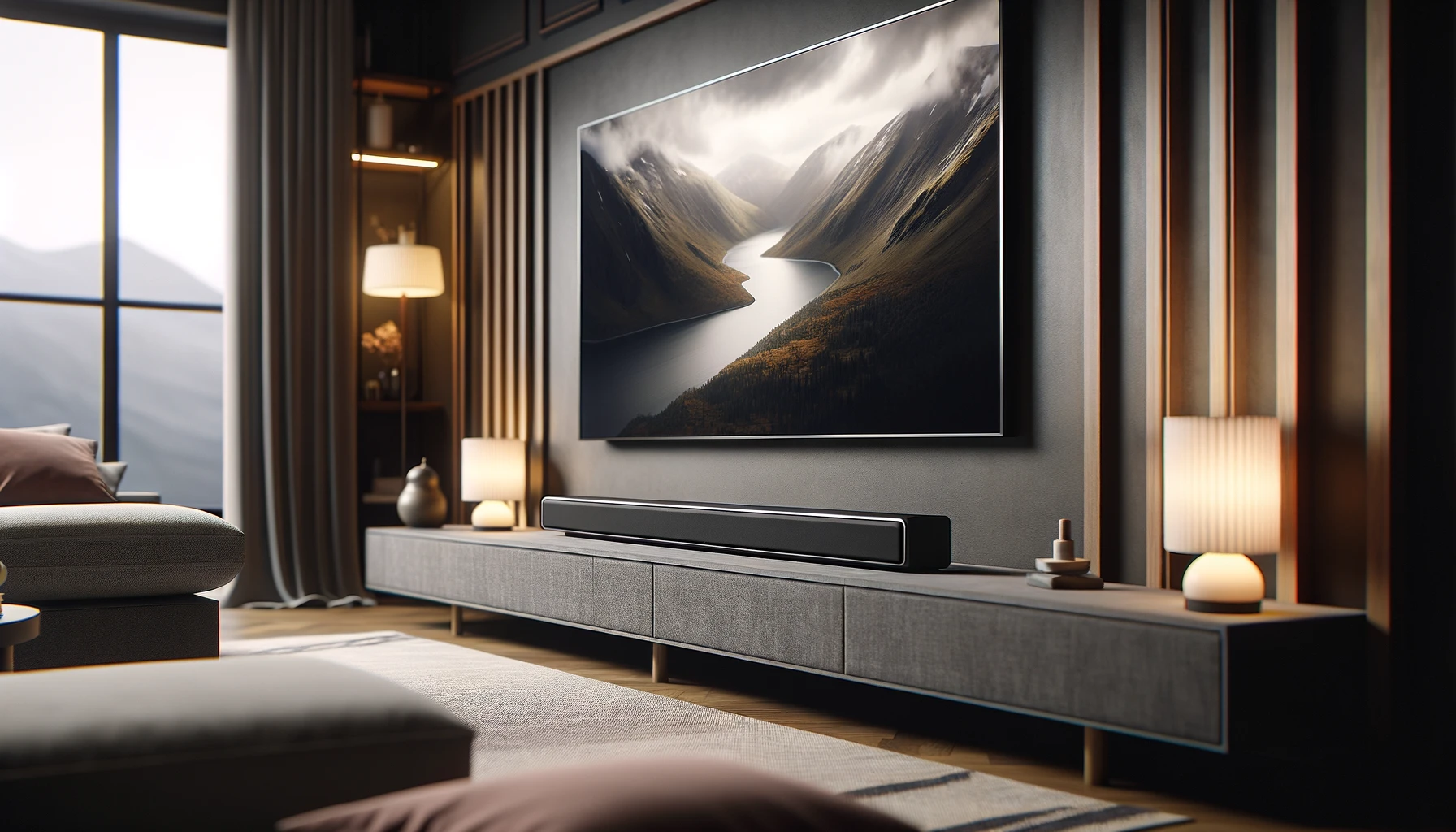Have you ever wondered why some soundbars seem to deliver a more immersive and impactful audio experience than others? The answer could lie in their size.
While size is not the only factor that determines a soundbar’s performance, it plays a crucial role in shaping the overall audio quality and listening experience.
From the ability to accommodate larger drivers for better bass response to the impact of cabinet volume on sound reproduction, the size of a soundbar can influence various aspects of its audio output.
Let’s dive in to explore how size matters when it comes to choosing the right soundbar for your setup.
Does the Size of a Soundbar Matter?
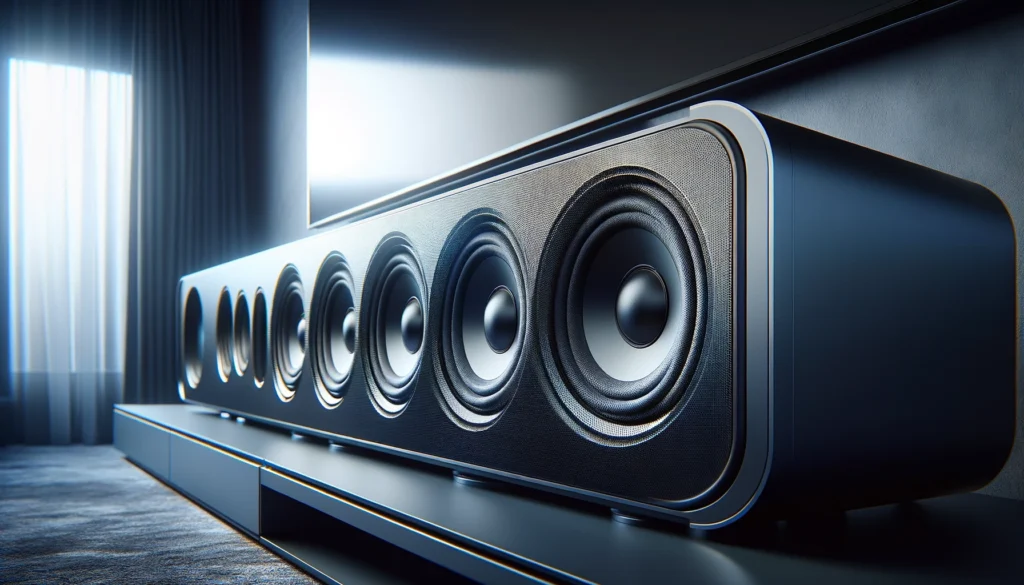
While the size of a soundbar is not the sole determinant of its audio quality, it does play a significant role.
Generally, larger soundbars have the advantage of accommodating bigger drivers and more powerful amplifiers, resulting in better bass response, louder volume capabilities, and improved overall audio fidelity.
However, we will explore the topic more deeply below to understand the nuances and other factors that contribute to an optimal audio experience.
Understanding Soundbar Dimensions
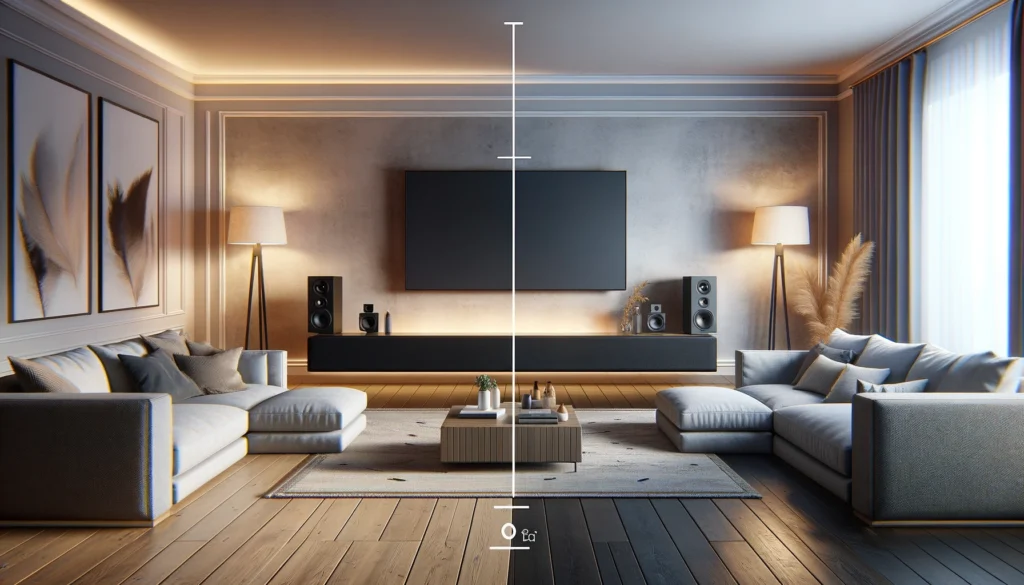
When it comes to soundbars, size plays a crucial role in determining their performance and suitability for your space.
The length of a soundbar is directly related to the size of the room it will be used in.
A longer soundbar can provide a wider and more immersive sound stage, making it ideal for larger rooms or open-plan living areas.
Conversely, a shorter soundbar may be better suited for smaller spaces, as it can deliver a more focused and concentrated audio experience.
Additionally, the height and depth of a soundbar should be considered when it comes to placement.
Some soundbars are designed to sit directly in front of your TV or display, while others can be wall-mounted.
The height and depth of the soundbar can impact its ability to deliver clear and unobstructed sound, especially if there are objects or furniture in the way.
Soundbar Length and Its Relation to Room Size
The length of a soundbar is directly proportional to the size of the room it will be used in.
A longer soundbar can create a wider and more immersive sound stage, making it ideal for larger rooms or open-plan living areas.
This is because a longer soundbar can accommodate more speakers or drivers, which allows for better separation and positioning of audio channels.
In contrast, a shorter soundbar may be better suited for smaller spaces, as it can deliver a more focused and concentrated audio experience.
Smaller soundbars are often designed to provide a more compact and space-saving solution without compromising on audio quality.
Height and Depth Considerations for Placement
The height and depth of a soundbar also play a role in determining its placement and overall performance.
Some soundbars are designed to sit directly in front of your TV or display, while others can be wall-mounted.
The height of a soundbar can impact its ability to deliver clear and unobstructed sound, especially if there are objects or furniture in the way.
Additionally, the depth of a soundbar can affect its placement options.
Soundbars with a shallower depth may be more suitable for setups where space is limited, as they can be placed closer to the wall or TV stand without obstructing the viewing experience.
The Role of Size in Sound Quality
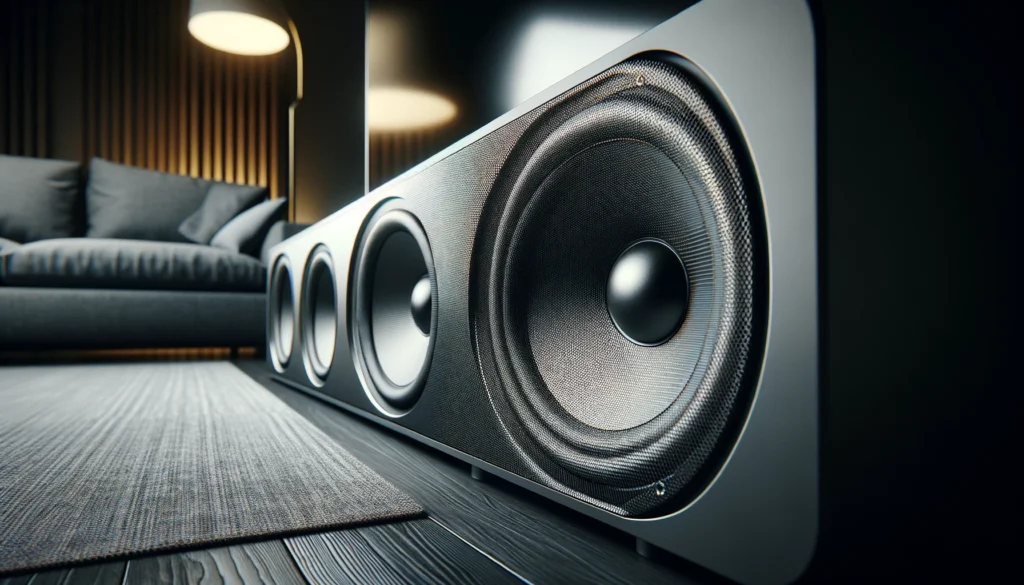
While the size of a soundbar is not the only factor that determines its sound quality, it does play a significant role in shaping the overall audio experience.
Larger soundbars often have the advantage of accommodating larger drivers and more powerful amplifiers, which can result in better bass response and overall audio fidelity.
Larger Drivers for Better Bass Response
One of the primary benefits of a larger soundbar is the ability to incorporate larger drivers or speakers.
These larger drivers can move more air, which translates to better bass response and overall low-frequency performance.
This is particularly important for movies, music, and gaming experiences that require impactful and immersive bass.
However, it’s important to note that the quality of the drivers and the overall design of the soundbar’s internal components also play a crucial role in determining the overall bass performance.
Cabinet Size and Its Impact on Audio Fidelity
The size of a soundbar’s cabinet can also influence its audio fidelity.
A larger cabinet provides more internal volume, which can result in better sound reproduction and less distortion at higher volumes.
This is because a larger cabinet allows for more effective management of internal resonances and vibrations, which can negatively impact sound quality.
Additionally, larger cabinets often have more surface area for the drivers to disperse sound, resulting in a more controlled and accurate audio projection.
Size vs. Power Output: Are They Correlated?
While larger soundbars often have the ability to accommodate more powerful amplifiers, it’s important to note that size and power output are not always directly correlated.
Some smaller soundbars can still deliver impressive power output thanks to advances in amplifier technology and efficient speaker design.
However, in general, larger soundbars have an advantage when it comes to power handling and overall headroom.
This can translate to better dynamics, louder volume capabilities, and the ability to reproduce more complex audio signals without distortion.
Choosing the Right Size for Your Setup
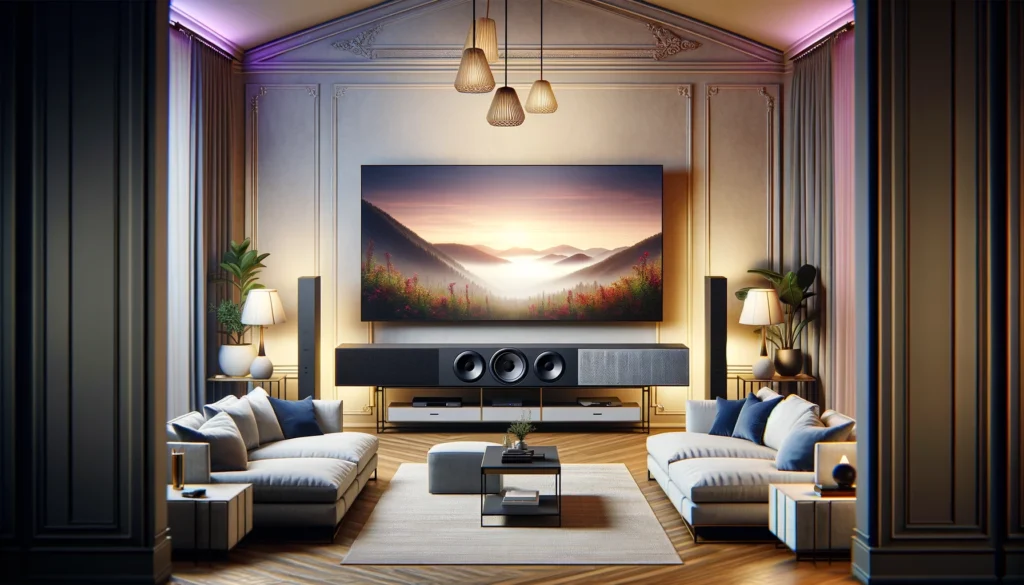
Selecting the appropriate size for your soundbar setup involves considering various factors, including the size of your TV or display, the room layout and seating arrangement, and your personal aesthetic preferences.
Matching the Soundbar Size to Your TV/Display
One of the most common guidelines for choosing the right soundbar size is to match it with the size of your TV or display.
This not only ensures a visually cohesive setup but also helps in achieving balanced audio performance.
A larger TV or display may require a longer soundbar to provide an immersive audio experience that matches the visual scale.
On the other hand, a smaller TV or display may be better complemented by a more compact soundbar, as a larger one could potentially overpower the visual experience.
Considering the Room Layout and Seating Arrangement
The layout of your room and the seating arrangement also play a crucial role in determining the ideal soundbar size.
In larger rooms or open-plan living areas, a longer soundbar may be necessary to provide a wide and enveloping sound stage that reaches all seating positions evenly.
Conversely, in smaller or more confined spaces, a shorter soundbar may be more suitable to avoid overwhelming the room with sound and to maintain a balanced audio experience.
Balancing Size with Aesthetic Preferences
While the size of a soundbar is primarily driven by performance considerations, it’s also important to factor in your personal aesthetic preferences.
Some individuals may prefer a sleeker and more minimalist design, which could influence their choice towards a more compact soundbar.
On the other hand, if you prioritize a bold and immersive audio experience, a larger soundbar may align better with your preferences, provided that it complements the overall design of your living space.
Compensating for Size Limitations
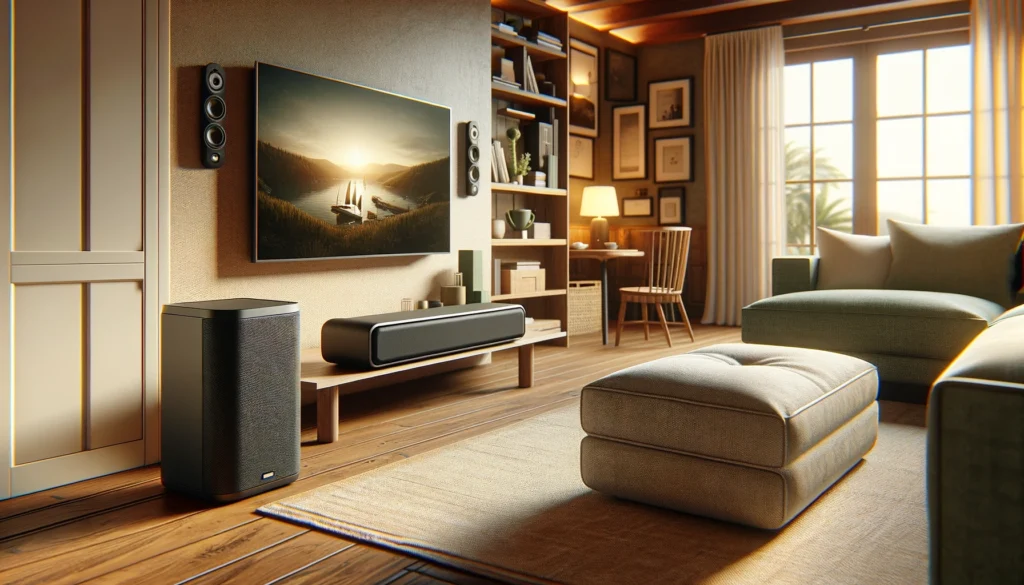
In some cases, the size of your room or personal preferences may not align with the ideal soundbar size for optimal audio performance.
However, there are various solutions and technologies available to compensate for size limitations and enhance the overall sound experience.
Wireless Subwoofers for Enhanced Bass
One of the most effective ways to compensate for the bass limitations of a smaller soundbar is by incorporating a wireless subwoofer into your audio setup.
Subwoofers are dedicated speakers designed to handle low-frequency sounds, providing a deep and impactful bass experience.
By adding a wireless subwoofer, you can enjoy a more immersive and dynamic audio experience without sacrificing the compact size and convenience of your soundbar.
Virtual Surround Sound Technologies
Many modern soundbars incorporate advanced virtual surround sound technologies that can create the illusion of a multi-speaker setup, even with a compact form factor.
These technologies use advanced digital signal processing and carefully positioned drivers to simulate the audio cues and reflections that would typically be produced by a traditional surround sound system.
By leveraging virtual surround sound technologies, you can experience a more immersive and enveloping audio experience, even with a smaller soundbar.
Room Correction and Calibration Features
Some high-end soundbars come equipped with room correction and calibration features that can help optimize the audio performance based on the unique acoustics of your living space.
These features often use built-in microphones or external measurement devices to analyze the room’s characteristics and adjust the soundbar’s output accordingly.
By taking advantage of room correction and calibration features, you can potentially compensate for any size limitations or acoustic challenges, ensuring that your soundbar delivers the best possible audio experience for your specific setup.
Size Myths and Misconceptions
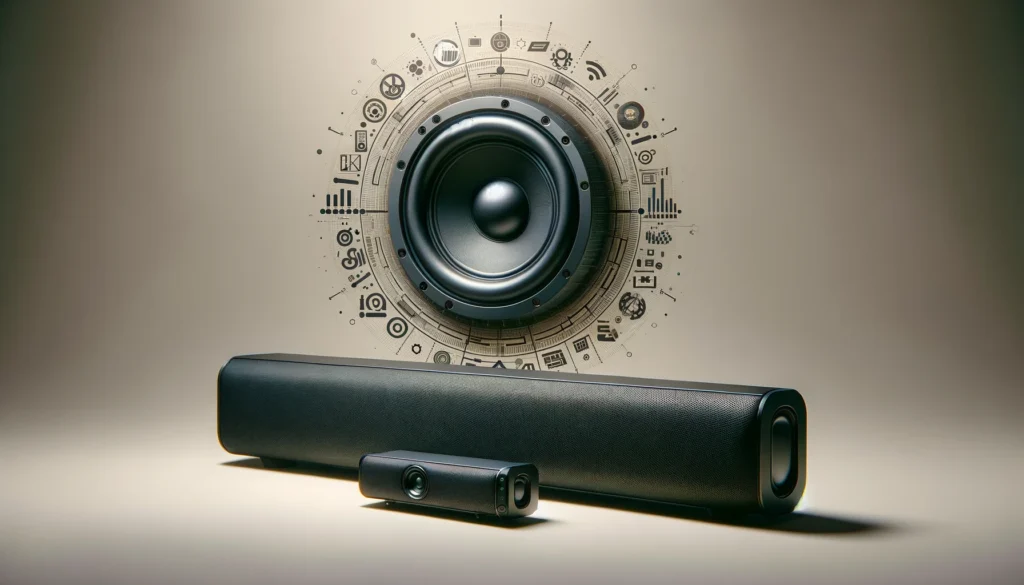
Despite the common belief that bigger is always better when it comes to soundbars, there are several myths and misconceptions surrounding size that need to be addressed.
Debunking the “Bigger is Always Better” Myth
While larger soundbars often offer certain advantages in terms of audio performance, it’s important to recognize that size alone is not the sole determinant of sound quality.
Many other factors, such as driver quality, amplifier design, and audio processing technologies, play a crucial role in shaping the overall listening experience.
Blindly assuming that a larger soundbar will always deliver superior sound quality can lead to disappointment and suboptimal performance if other critical components are not up to par.
Size vs. Audio Processing and Speaker Configuration
Modern soundbars often incorporate advanced audio processing technologies and innovative speaker configurations that can significantly enhance the audio experience, regardless of their physical size.
For example, some compact soundbars utilize advanced beam-forming technologies or psychoacoustic processing to create a wider and more immersive sound stage.
Additionally, the strategic placement and configuration of drivers within a soundbar can greatly impact its ability to deliver accurate and detailed sound, even in smaller form factors.
The Importance of Room Acoustics Over Size Alone
While size can influence a soundbar’s audio performance, it’s important to recognize that the acoustic properties of your room play a significant role in shaping the overall listening experience.
Factors such as room dimensions, furniture placement, and surface materials can all contribute to how sound is perceived and experienced.
In some cases, addressing room acoustics through proper speaker placement, room treatment, or calibration can have a more profound impact on audio quality than simply opting for a larger soundbar.
Future Trends in Soundbar Design
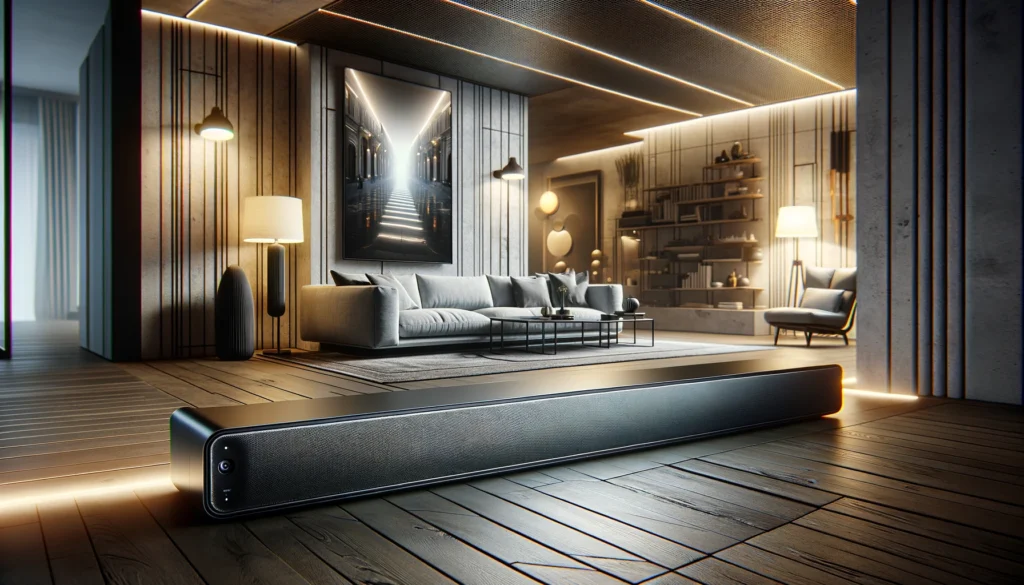
As technology continues to evolve, the world of soundbars is also undergoing constant innovation and advancement.
Here are some exciting future trends in soundbar design that aim to balance size, performance, and convenience.
Compact Soundbars with Advanced Audio Technologies
One of the emerging trends in the soundbar market is the development of compact models that pack advanced audio technologies into sleek and space-saving designs.
These soundbars leverage cutting-edge audio processing algorithms, innovative driver configurations, and advanced materials to deliver impressive sound quality while maintaining a minimalist form factor.
Such compact soundbars can be particularly appealing to individuals with limited space or those who prioritize a minimalist aesthetic without compromising on audio performance.
Modular and Expandable Soundbar Systems
Another exciting trend in soundbar design is the introduction of modular and expandable systems.
These soundbars are designed to be easily upgradable or customizable, allowing users to add additional components or speakers as their needs evolve.
For example, some modular soundbar systems may start with a compact base unit but offer the ability to add wireless rear speakers or subwoofers for a more immersive surround sound experience.
This approach provides flexibility and scalability, catering to different room sizes and audio requirements.
Space-Saving Designs for Minimalist Setups
As home entertainment systems become more streamlined and minimalist, there is a growing demand for soundbars that seamlessly integrate into modern living spaces.
Manufacturers are responding by developing sleek and low-profile designs that can blend seamlessly with contemporary decor and minimalist aesthetics.
These space-saving soundbars often feature slim form factors, discreet cable management solutions, and innovative mounting options, ensuring a clutter-free and visually appealing setup without compromising on audio performance.
Note about the flow of the entire blog article:
The article starts by introducing the importance of soundbar dimensions and their relation to room size and placement considerations.
It then delves into the role of size in sound quality, covering topics like driver size, cabinet volume, and power output.
Next, it provides guidance on choosing the right soundbar size based on factors like TV size, room layout, and personal preferences.
The article then explores ways to compensate for size limitations, such as incorporating wireless subwoofers, utilizing virtual surround sound technologies, and leveraging room correction features.
To address common myths and misconceptions, the article discusses the fallacy of the “bigger is always better” belief, highlighting the importance of other factors like audio processing and speaker configuration.
It also emphasizes the significance of room acoustics in shaping the overall audio experience.
Finally, the article looks ahead to future trends in soundbar design, including compact models with advanced technologies, modular and expandable systems, and space-saving designs for minimalist setups.
Throughout the article, the tone is informative and educational, aiming to provide readers with a comprehensive understanding of the role of size in soundbar performance and how to make an informed decision based on their specific needs and preferences.
Conclusion
When it comes to the question “Does the Size of a Soundbar Matter?”, the answer is both yes and no.
Size plays a significant role in shaping the audio performance and overall experience a soundbar can provide.
However, it is not the sole determinant of sound quality.
Factors such as driver quality, amplifier design, audio processing technologies, and room acoustics all contribute to the final audio output.
Ultimately, choosing the right soundbar size involves striking a balance between performance, convenience, and personal preferences.
While larger soundbars often offer advantages in terms of bass response, power handling, and immersive sound staging, compact models can still deliver impressive audio quality thanks to innovative technologies and design approaches.
As the home entertainment industry continues to evolve, we can expect to see more exciting developments in soundbar design, catering to diverse needs and preferences.
Whether you prioritize a minimalist aesthetic, modular expandability, or cutting-edge audio technologies, the future of soundbars promises to offer solutions that seamlessly blend size, performance, and convenience.
